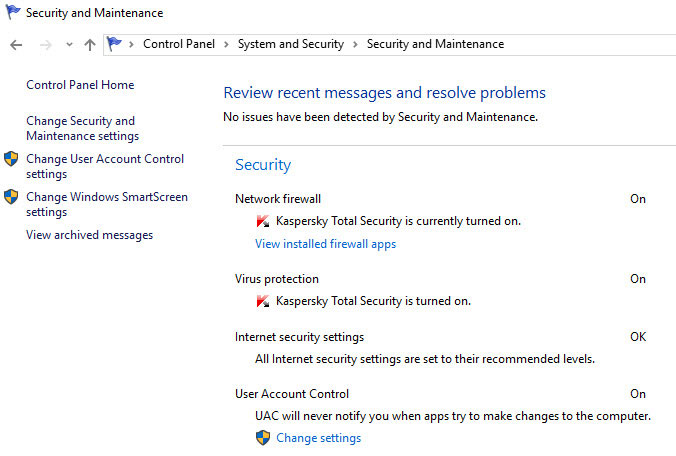It’s been a while since we have been seeing Windows Defender; most of you know really well about default anti-virus and protection suite of Microsoft Windows OS. As a user, it’s completely up to you to stick on to it or go for a third-party program from trusted developers like Kaspersky or Bitdefender. In fact, Microsoft has never said that Windows Defender is a complete protection suite – the company too knows the program is lacking a lot of options and technologies. That is why Windows Defender is programmed to turn off naturally if there is another antivirus security program installed.

Yes, you heard that right. Suppose you are going to install Bitdefender Antivirus in your PC. In natural case, your PC will automatically disable Windows Defender – to avoid messing. In case if you don’t know, running two antivirus programs at once will cause you more trouble than good. That having said, there are instances when these things don’t go as planned. In an unusual case, Windows Defender will not turn off after installing third-party antivirus program. Don’t worry; we have several fixes that can help you. In this article, we would share some effective solutions to fix the Windows Defender Not Turning of issue.
Note: Not all these solutions are universal. Depending on the OS version you are using and the settings you have changed, one of these methods will surely work. So, don’t panic if one method does not work – go for the other method instead.
Method #1
You should if some parts of your Windows security is still active, instead of the third-party program. To get that done,
Open Control Panel in your system and go to the Security sub-menu.

There, you will see some notifications regarding security. For instance, you may find that Windows Firewall is not active. This happens if the third-party antivirus program comes with an in-built Network Firewall.
If you find that option, click on the button and choose the Third-Party Firewall from the option. By now, full security control of your system would be handed over to the security program you’ve installed.
This should be an effective way to disable WD if it wasn’t disabled earlier.
Method #2
Now, we can try doing another method – by checking if Windows Defender is really disabled. To do that,
Open Settings in your Windows 10 PC and go to Updates & Security.

From the side-bar, you have to select Windows Defender and you can see a bunch of options on right.
- Make sure that Real-Time Protection has been turned off; if it’s not, turn it off
- Make sure that Cloud Protection has been turned off; if it’s not, turn off
You can simply drag the slider to change the on/off positions. It’s very simple but can help you get rid of WD running in background.
Method #3
Another possible reason why Windows Defender is not turning off is that the files may be corrupted. This is a common case if you had made some major changes to your PC. There are two ways to fix this, but they do not assure you results.
- You can run System File Checker to find out if there is corruption in system files.
- You can also use the DISM tool to find out the possible issues.
These methods may take some time and requires a bit of experience in command-prompt stuff. But, still, it is a viable option for dealing with the WD issue.
Method #4
There is an in-built Windows feature named Clean Boot State. This one is supposed to help you find the deep issues inside Windows PC and fix them instantly. You have better things to do with this mode if WD will not turn off automatically.
One option is to reboot your Windows PC in Clean Boot State. In this case, only the startup programs would be loaded. Try disabling Windows Defender in the current situation. If the problem is not found, you can be sure that there is a third-party problem-cause for the issue.
Now, you can use some third-party programs or helping tools to get the issue done. All you have to do is to find out the culprit software and get rid of now. And, after removal, you won’t have trouble in dealing with WD disabling.
Method #5
If you are an advanced Windows user, you might have programmed Windows Defender to take care of PUPs as well. PUPs mean Potentially Unwanted Programs. This is possible only if Windows Defender has complete access to your PC – with all the required permissions.
If you had enabled the option, you should revoke the access before removing Windows Defender from PC. You will have to go to Registry and make some changes to get this done.
Summing Up
These are the five different solutions to forcefully turn off Windows Defender after you have installed some third-party antivirus programs. As we said earlier, you need to try every method before giving up. If one does not work, the other one may.